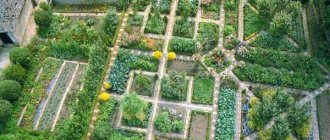After a long, tiring day at work, is it great to relax and unwind among nature? When you live in a crowded city, it's not easy. However, this is also possible. How to make a garden on the balcony? Basic principles for creating a piece of paradise at home.
Balcony gardening is becoming increasingly popular among people living in big cities. With a beautiful garden on your apartment's balcony, you can bring nature into your home.
Who will especially like the idea of such gardening? Of course, for those who love plant growing, but cannot indulge in their hobby due to limited space. Creating your own small garden on the balcony is incredibly simple. You just need to keep a few basic principles in mind.
Examine your balcony thoroughly
This is the most important step you must take if you want to create a beautiful balcony garden. The growth of plants depends mainly on their environment.
In our case, the balcony is a mini-environment for your future plants.
Therefore, before moving on to other things, it is necessary to get a proper understanding of some parameters.
Balcony size
So, the design of the garden depends on the size of your balcony. It seems like a simple thing, but it's surprising how many people don't think about it. Find out the exact size of your balcony by measuring the length, width and height of your balcony.
It will be very helpful if you make a rough sketch on paper. It will also give you a mental plan for your garden design.
Balcony direction
The direction of the balcony will give you a rough idea of the sunlight it receives. Sunlight is beneficial for all plants. This is especially important if you intend to grow flowering plants or vegetables in your garden. A north-facing balcony is not suitable for this purpose. But even in this case there are certain options.
A south-facing balcony usually receives ample sunlight during the day and is ideal for plants.
You can also observe the illumination of the loggia personally, and not rely only on the direction of the cardinal points. After all, your balcony may be surrounded by other buildings. In this case, it may not receive enough sunlight. Although it will even be in a favorable direction.
Additionally, it will also give you an idea of the exact duration of direct sunlight your balcony receives. This will further help you in choosing the right balcony plants.
Wind
Like sunlight, wind is another factor that will decide which plants you need to buy. Many plants do not cope well with winds. Winds also cause plants to quickly wither and dry out. So, you will have to devote more time to watering them. You can also try using mulching to protect your plants from the wind.
Number and size of plants
The number and size of plants is an important criterion when arranging a garden in a small space. Vases with flowers should not overload the room. They need to be placed so that each plant has free access for watering. Large flowers in heavy tubs should be placed on special mobile stands on roller supports. Then they can be easily moved when cleaning the room.
Flower garden in the loggia
External landscaping of the balcony
In order for the winter garden to delight the eye with lush greenery and bright flowering all year round, you need to pay attention to the selection of the species composition of plants. When choosing, you need to consider:
- room dimensions;
- orientation of the balcony (loggia) in relation to the cardinal points;
- family way of life;
- costs of heating and lighting the garden in winter.
By following a few simple principles, you can create a beautiful garden on your balcony without much hassle. Ideas for choosing and placing plants open up great scope for creating original garden compositions.
Arranging a garden on the balcony
Garden on a glass balcony
Choose your plants wisely
Now that you have determined your balcony parameters, you can easily select your balcony plants. There are two types of plants that you can add to your balcony garden. These are annual plants that grow in certain seasons and perennial plants that are evergreen throughout the year.
Plant both types. And you'll be able to enjoy annual herbs and vegetables in addition to perennials. Start small. Plant a maximum of 5-6 plants, 2-3 types of annuals and perennials.
Annuals are usually easy to grow and flower beautifully in season. Perennials like roses may require time and extra care. But think of the rose scent wafting across your balcony. It's worth it!
One more thing you should keep in mind. Is your balcony sunny or shady? Not all plants need sunlight. And if your balcony doesn't get regular sunlight, you can buy shade plants. But plants that love and need sunlight will die in dim lighting.
Usually people plant flowers in their balcony garden. But you can also try growing other plants. For example, it is very easy to grow edible herbs in containers. You can also dilute blueberries and currants. They also do well in pots.
Creating an original garden on the balcony: practical tips
A garden on a balcony is an amazing opportunity even for a city dweller to enjoy incredible beauty and landscapes right at home. Landscaping the area allows you to create a picturesque corner that will delight you with its beauty and sophistication. You don't need to put in too much effort to make such a beautiful place. The main thing is to carefully plan the process, think through every detail, and select the optimal plants. Let's look at the main points related to creating a picturesque greenhouse at home.
Don't Ignore Pots and Containers
Containers and balcony planters play a significant role in your balcony garden. Try adding a little creativity. And plant contrasting flowers in pots. Alternatively, you can try hanging planters if you have limited space on your balcony.
You can also buy colored containers if you want to decorate your balcony garden. Interesting looking containers will improve the appearance. You also need to consider their placement, size and material.
Read on topic: Container gardening.
Material
You can buy different types of containers made from plastic, clay, ceramics and similar materials. Plastic containers are generally lightweight and are ideal if you plan to have hanging containers on your balcony.
However, they prevent water from leaving the soil. And they can lead to waterlogging and root rot. So, buy pots with a drainage hole or make your own.
On the other hand, ceramic and clay containers are stable and durable, which can protect plants from falling. Additionally, they are made from porous materials and offer better drainage.
If you want to give your garden balcony an interesting look, you can even use metal pots.
Size and placement
Thoughtful selection of container size and placement is essential to making your garden look beautiful. If your balcony is small, use tall and narrow containers because they take up less space than others.
You can also experiment with hanging planters to optimize the vertical space of your balcony. In case you are planning to grow vegetables, you will need planters and wide boxes.
To give your balcony garden a natural look, use containers of different heights. You can also add colorful rocks, pebbles or gravel to the planters. This will give them another look and can also serve as mulch for the soil.
Selection of furniture and decor for the winter garden on the balcony
Another important condition for creating a truly cozy and ergonomic place to relax with a greenhouse on the balcony is the right choice of furniture for it. Since balconies usually have a small area and are designed for a small weight load, when arranging furniture and various decor you need to remember several important things:
So, creating a real winter garden is a difficult, but very exciting task, which you can easily cope with after studying all aspects of this issue. The most important thing is not to forget that flowers and green plants will survive for a long time only if they are properly cared for. Timely watering, spraying leaves, fertilizing and maintaining suitable conditions will turn your greenhouse into a real work of art!
What plants to choose for the winter garden and how to care for them, watch in our video:
Source
Provide watering
Despite what you might think, plants need care. The amount of watering a plant may require may vary. But all herbs, flowers and vegetables need life-giving moisture.
Do you often stay away from home? You may need to install a drip irrigation system. Or buy self-watering pots with large reservoirs for your balcony plants.
Watering becomes even more necessary if your balcony gets windy or gets too hot during the day. Your plants can become dry if under-watered in these conditions.
Winter garden on the balcony: from A to Z
In a noisy, dusty and stuffy city, apartment residents have learned to appreciate every minute of time spent in nature.
But in the modern rhythm of life, few manage to get out to the country house, river, or even for walks in the parks often enough. That is why, more and more often, elements of “natural” styles appear in the interiors of apartments - finishing with stone, wood, the predominance of natural lighting and light colors. However, the most popular way to liven up an apartment and give eco-friendly styles a certain identity is to add green and flowering plants. Moreover, cacti placed on window sills and shelves will not surprise anyone, because real connoisseurs of wildlife are able to organize a real winter garden in their own apartment!
Great place for relaxation!
Vegetable garden on the balcony. We choose suitable plants.
Own garden
- This is wonderful!
But what should
those who don’t have a garden do yet, but grow a little of their own greens.
To implement the simplest concept of a mini-garden without decoration, the center of the composition should be the largest plant. For example, palm, ficus, yucca or dracaena. A pot with one of these plants is placed on the floor, and around it there are small pots or containers with greenery, matching each other in the shape of the leaves, their color or size. For example, you can form Calathea, Antirium, Euphorbia, Cyperus and Crassula into one group. They need to be placed so that one does not obscure the other, and there is good access to light.
Remember! Light-loving and ornamental plants - orchids, roses, azaleas and hydrangeas - are placed closer to natural light.
Lianas and hanging vines feel good in hanging flower pots. Experts recommend choosing plants for the winter garden, taking into account your personal characteristics and taste preferences. For example, lovers of minimalism will find solace in compositions collected from succupents, agave and cacti. When realizing your fantasies, always think whether the conditions created on the balcony meet the needs of each flower, tree or bush.
The first stage of arranging a garden on a balcony or loggia
Before making a winter garden on the balcony, you need to decide on the following questions:
These three points are the fundamental factors that shape the appearance of the garden on a loggia or balcony.
If the plants are on the balcony only in the summer, then it will be enough to equip the room with various stands that will allow you to rationally arrange the maximum number of flowerpots. These can be ready-made multi-level structures made of wood, rattan, plastic or metal.
Supplies for flowers can also be made individually (independently or to order) taking into account the size and configuration of the room. For example, stepped floor stands, hanging shelves, window sills of non-standard width, flowerpots, etc.
Garden on the balcony of a private house
When installing a winter garden, you will need to take care of insulating the balcony or loggia, heating, installing energy-saving glazing and additional lighting for flowers.
Summer garden on the balcony
DIY garden on the balcony: choosing flowers
To realize your dream of a beautiful, green corner, you should carefully and correctly select crops.
We suggest focusing on the most popular plants.
For solar loggias
Southern or southeastern loggias are an excellent location for light-loving crops. Petunia is considered the most beautiful and easiest to care for. Such flowers can be hanging (which is optimal for hanging containers), as well as bush flowers.
Marigolds look no less attractive. They are undemanding to soil composition and can easily withstand both drought and large amounts of sunlight. Shades of yellow, red, orange, white will allow you to mix interesting compositions.
Among the beautiful climbing annuals are:
In the summer, you can take succulents and cacti out into the open. They will be a great addition if you are planning a mini-garden on the balcony.
For north side
For shaded areas, appropriate crops should be selected. Beautiful cozy corners will also be formed based on shade-loving, shade-tolerant species of garden crops. An excellent solution would be to plant carnations, gillyflower, gazania, and calendula. Petunia would also be a good choice. Although its flowering is less abundant, it will still add bright colors.
For west or north side
For loggias located on the western or northern sides, you can grow interesting indoor representatives. For example, tradescantia, ivy, crassula, fuchsia, and chlorophytum are suitable. You can plant large specimens such as ficus, myrtle, oleander, monstera, and clivia. Begonias are a great idea too. They have various shades of petals and are distinguished by the decorativeness of their leaves.
Several ideas for decorating a garden on a balcony
You can find a place for plants even on the smallest balcony. At the same time, it is not necessary to fill all possible space with flowerpots. In order to create a beautiful mini garden on the balcony, it is enough to place several pots or boxes with flowers.
It is recommended to arrange so-called vertical gardens on narrow balconies or loggias. They are based on wooden or metal wall structures, to which boxes or flowerpots are attached. For a vertical garden, compact species and varieties of ornamental plants are selected.
These are many types of succulents, cacti, some varieties of adiantum (Adiantum) and peperomia (Peperomia), gloxinia (Gloxinia), indoor violet (Saintpaulia) and others. On the vertical structures of an open balcony in the warm season, you can grow dwarf varieties of marigolds, snapdragons, and carnations (Dianthus).
Green “wall” on the balcony Flowers on the wall in the loggia
In a vertical garden you can grow not only ornamental plants, but also salad and spicy-flavoring plants. Lettuce, parsley, miniature varieties of basil, thyme, and savory grow beautifully on the balcony, providing their owners with delicious aromatic herbs all summer long. A pair of flowerpots with decorative cabbage will be an effective completion of the composition of your home garden. They can be placed on high stands next to the wall. Rosettes of ornamental cabbage leaves with white, pink or purple colors (depending on the variety) look like large exotic flowers.
Flowers in a textile pot on the balcony Flowers on the veranda
Another idea for landscaping a small balcony is miniature compositions of plants in ceramic pots or glass containers. To create a composition, species are selected that are similar in their requirements for living conditions (soil composition, watering, lighting). Get along well with each other:
Another option is also possible. Several different flowers in separate pots will be placed in one large ceramic bowl. In this case, you can take plants with different requirements for watering regimes. In the warm season, miniature compositions are placed on the balcony on stands, and with the onset of cold weather they are brought indoors.
Climbing plants on the balcony Japanese garden on the balcony
Where to start arranging a garden on the balcony of your home
Before you make a garden on your balcony, there are several important points to consider. First of all, check the building regulations. Under no circumstances should you design a winter garden if this is prohibited by the house rules.
Before decorating a garden on your balcony, make sure that your idea will not cause inconvenience to your neighbors
Also additionally consider the following points:
Also, do not forget that the garden on the open balcony can be replenished with indoor representatives in the summer. For example, succulents, various greens or cacti feel great.
A prerequisite before creating such a green space is to determine how much room you are willing to allocate for growing. After all, in addition to pots with plants, you can install chairs and a table on the loggia, as well as additional decorative elements. The wall space is used for hanging curtain rods and wall containers.
Determine for yourself how much free time you are willing to devote to caring for your crops. Depending on this, select the most optimal plants. The financial issue also matters. It is much more profitable to purchase flower or vegetable seedlings than to buy ready-made full-fledged plants. Instead of purchased containers, you can use homemade containers. For example, old coffee cans and fruit boxes are good for this (they are often thrown away near large supermarkets).
How to choose plants for your balcony garden?
Compact, slow-growing ornamental plants are optimal for small spaces. These are indoor violets (Saintpaulia), azalea (Azalea), miniature varieties of citrus fruits, some types of orchids, etc. Plants such as monstera (Monstera), dracaena (Dracaena), zamioculcas (Zamioculcas), cissus will look good on large balconies or loggias rhombifolia (Cissus rhombifolia), some representatives of the palm family (Palmaceae) and others.
Relaxation area on the balcony Garden on the open balcony
Illumination is one of the main factors that is taken into account when choosing the species composition of plants. A lack (and in some cases, an excess) of sunlight can lead to slower growth, cessation of flowering, and yellowing of leaves.
Balconies that face southeast or southwest are suitable for almost all indoor plants. On the south side, cacti and succulents, palm trees, representatives of the euphorbiaceae family, Beaucarnea, and Adenium will grow well. Ferns, representatives of the genus Chlorophytum, Aspidistra, ivy (Hedera), hibiscus, begonia, and some ficus trees are suitable for northern balconies.
Not everyone is ready to spend a lot of time caring for indoor plants. And in cases where the family’s lifestyle involves frequent travel, daily care of the home garden is simply not possible. But if you want to create a winter garden on a loggia, you need to pay attention to species that are undemanding in terms of watering, soil quality and replanting. These are cacti and succulents that can survive without water for up to one month. By the way, in some types of cacti, a prolonged lack of moisture stimulates flowering. Phalaenopsis orchids are not too demanding when it comes to watering. It is enough to water them once a week. Unpretentious plants also include dracaena (Dracaena), sansevieria (Sansevieria), spathiphyllum (Spathiphyllum), ivy (Hedera).











